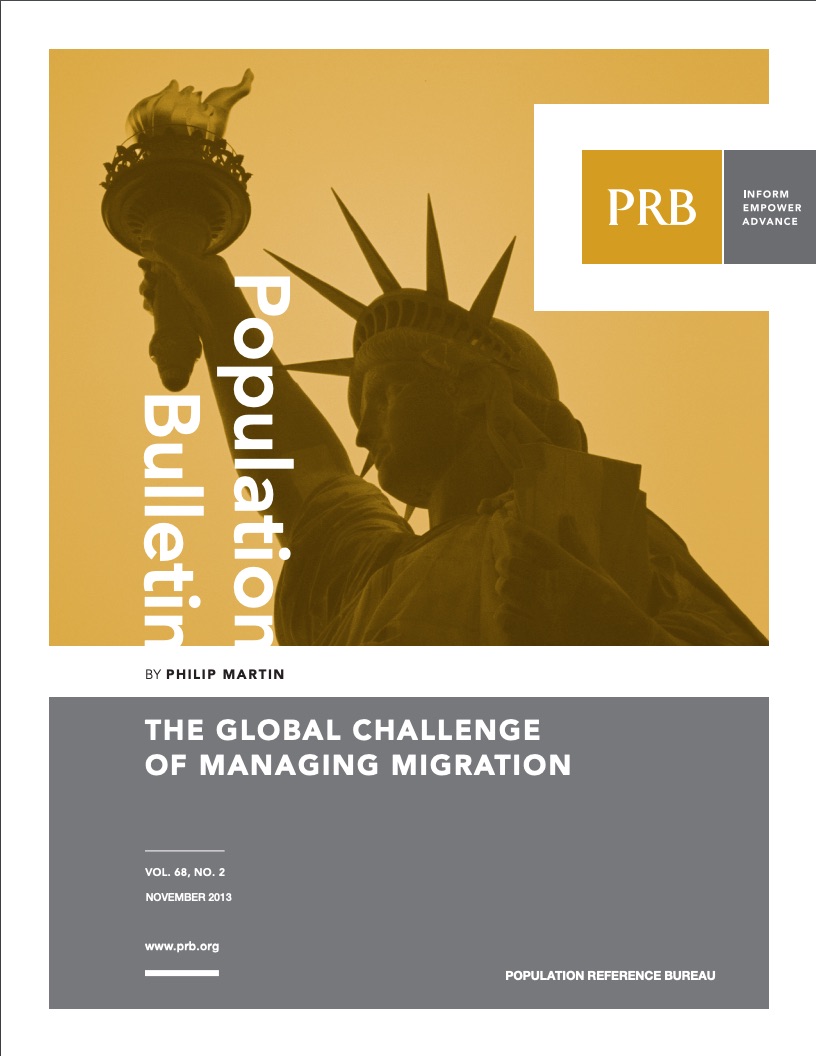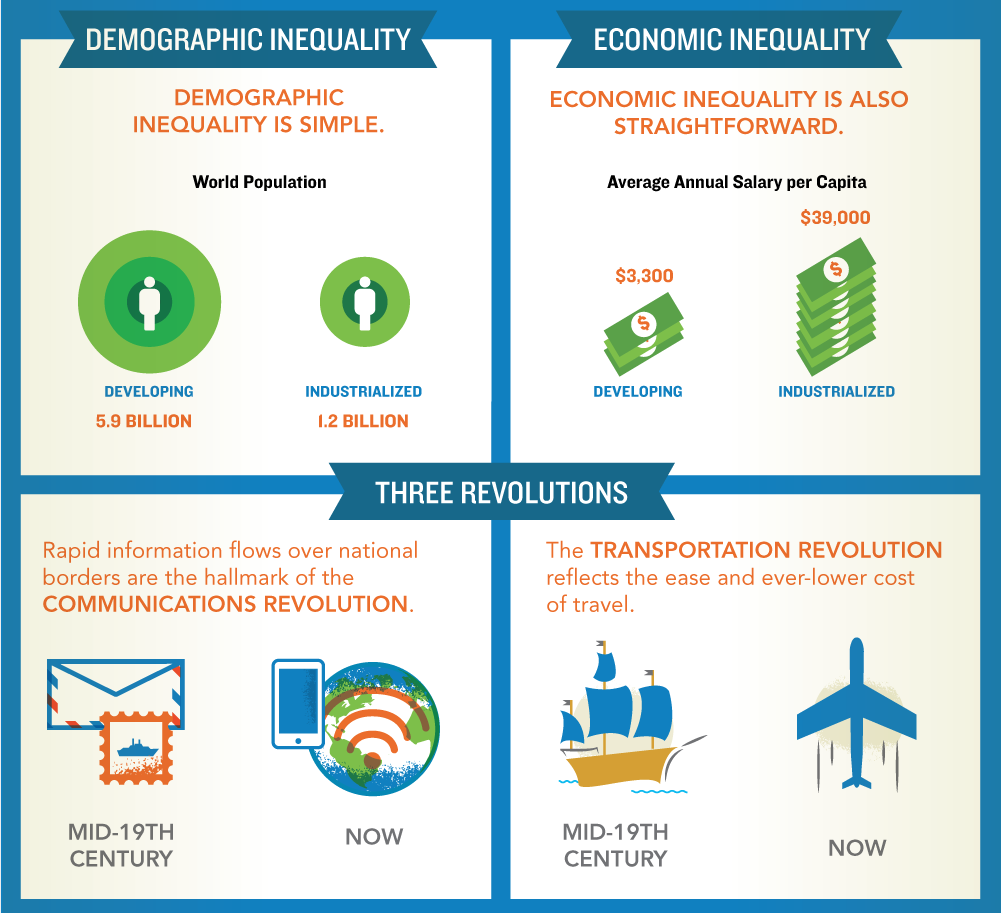
The Global Challenge of Managing Migration
Product: Population Bulletin, vol.68, no. 2
Author: PRB
Date: December 3, 2013
(December 2013) The number of international migrants more than doubled between 1980 and 2010, from 103 million to 220 million. In 2013, the number of international migrants was 232 million and is projected to double to over 400 million by 2050.
International migrants are defined as persons outside their country of birth for at least a year. Each migration corridor has unique features, but there are four major migration flows, where South is a developing country and North is an industrialized country:
- South-South: The largest flow of migrants, just over 82 million or 36 percent in 2013, moved from one developing country to another, as from Indonesia to Saudi Arabia or Nicaragua to Costa Rica.
- South-North: The second-largest flow, just under 82 million or 35 percent, moved from a developing to an industrialized country, as from Morocco to Spain, Mexico to the United States, or the Philippines to South Korea.
- North-North: Some 54 million people or 23 percent of international migrants moved from one industrialized country to another, as from Canada to the United States.
- North-South: Almost 14 million people or 6 percent of migrants moved from industrialized to developing countries, as from Japan to Thailand.
About 60 percent of global migrants are in the 30 or more industrialized countries. Some 40 percent of migrants are in the 170 poorer developing countries. Almost half of the world’s migrants are women, 15 percent of migrants are under 20, and less than 7 percent of all international migrants are refugees.
The most significant recent change in international migration patterns is rising South-North migration. Between 1990 and 2010, the share of all international migrants in industrialized countries rose from 53 percent to 59 percent. The largest South-North migration corridor is Mexico-United States: Over 13 million Mexicans have moved to the United States since 1990. Large South-South migration corridors include Bangladesh to India (over 3 million migrants) and India to the United Arab Emirates (nearly 3 million migrants).
This Population Bulletin explains why people cross national borders, the effects of international migration on sending and receiving countries, and the struggle to improve migration management. The Bulletin examines international migration by region: North America and South America, Europe, Asia and the Middle East, Africa, and Oceania, and highlights major migration and development issues, including whether remittances, the money sent home by migrant workers abroad, speed development in migrant-sending countries.
Philip Martin is a professor at the University of California, Davis, chair of the UC Comparative Immigration & Integration Program, and editor of Migration News and Rural Migration News.

 ">
">
 ">
">





